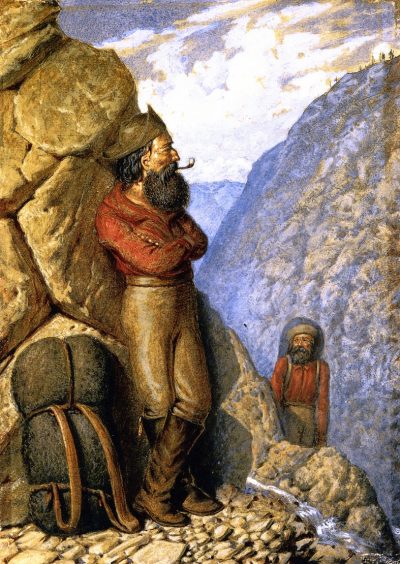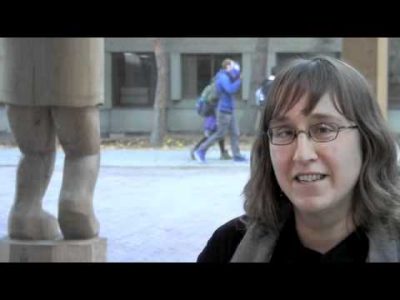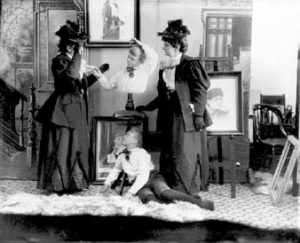#158 A province of non-believers
First Published August 19, 2017
REVIEW: Infidels and the Damn Churches: Irreligion and Religion in Settler British Columbia
by Lynne Marks
Vancouver: UBC Press, 2017. $34.95 / 9780774833462
Reviewed by Chelsea Horton
*
More British Columbians self-identify as secular than do the populations of any other province in Canada today. And, historian Lynne Marks illustrates in Infidels and the Damn Churches: Irreligion and Religion in Settler British Columbia, this has been the case since B.C.’s early days.
In this richly researched study, Marks investigates the roots of secularism in this province between the 1880s and 1914, a period, she argues, when B.C.’s particular demographic and economic constitution combined to destabilize Christian hegemony and open more ir/religious options for white settler men and women in tiny resource towns and urban centres across the province.
Infidels and the Damn Churches finds evidence for the adage that “men left God behind when they crossed the Rocky Mountains into British Columbia” (p. 4). On the rough transient resource frontier of fur, fish, wood, and metal, where men far outnumbered women among the non-Indigenous population, a good number of white male workers eschewed Christianity entirely, some in favour of socialism.

Others, meanwhile, exhibited a more “fuzzy fidelity,” rejecting church attendance, for example, while belting out hymns in the local bar and requesting a Christian burial.
Marks productively probes discourses and lived practices of irreligion and religion in tandem. She employs the analytical framework known as “lived religion,” which emphasizes the differences between official and institutional religious doctrine and what adherents of that religion actually do or believe in practice and on the ground.
Marks shares this approach with historian Tina Block, whose recent book is also reviewed here: The Secular Northwest: Religion and Irreligion in Everyday Postwar Life (UBC Press, 2016) http://bcbooklook.com/2017/04/01/where-christ-is-not-almighty-2/
Moreover, Marks insists, and illustrates, that ir/religion, race, class, and gender are most effectively analysed in concert, a combination that makes Infidels and the Damn Churches a fresh approach to the study of secularism in general, and not just in B.C. or Canada.
This intersectional analysis leads to novel insights. Grounded in a wide-ranging secondary literature, as well as primary sources, Marks demonstrates, for example, that racism, as well as class consciousness, propelled hostility towards Christian churches on the part of white working-class men in B.C., many of whom bristled at critiques of anti-Asian policy and practice levelled by some church leaders.
“Virulent anti-Asian and anti-Indigenous racism,” Marks further argues, “also allowed many white working-class men to define their social respectability and inclusion in racial and class terms alone, without needing to affirm Christian connection and respectability” (p. 215). This at the same time as Christianity was intimately imbricated with Canadian policies and institutions of cultural genocide, including Residential Schools, and Indigenous people made their own meanings of Christianity in B.C.

For many of those white women who migrated to B.C. in the period Marks investigates, Christianity remained a source of personal stability, while it also produced new alliances such as that which led church leaders to endorse white women’s suffrage in B.C. earlier than elsewhere in the country. While irreligious options were more restricted for settler women than for men, there were nevertheless some who identified as secular, whether on their own or in the company of husbands.
Marks also demonstrates that women were key adherents of such alternative religions as spiritualism, Theosophy, and Christian Science, all of which thrived (in relative terms, anyway) in B.C. in the late-nineteenth and early-twentieth centuries. The activist orientation of these alternative religious movements, especially as they may have related to Indigenous peoples and colonialism in B.C., is one of many potential future lines of inquiry sparked by this study. So too is the “place of place” in this history. How/did irreligion contribute to the construction of a unique sense of place in B.C. in these decades, as Block illustrates for the postwar period?

By the author’s own account, Infidels and the Damn Churches was many years in the making and the depth of Marks’ research is readily apparent. Through seven substantive chapters, plus an introduction and conclusion, she pans effectively between quantitative and qualitative sources, and from broad comparative analysis to specific fine-grained examples.
Census records, not surprisingly, are central for tracking reported religious affiliation. Marks takes this further, however, by cross-referencing these records with available church membership lists to more accurately determine levels of local religious activity in select locations. Collaborative initiatives such as the Canadian Families Project, the Canadian Century Research Infrastructure Project, and the ViHistory database supported and amplified this analysis.
Marks also draws on existing oral history collections to offer insight into the lived ir/religion of individuals and families in locations like Nanaimo and Interior B.C. Printed sources including newspapers, letters, and personal memoirs — including the rants of “freethinking Kootenay journalist” Colonel Robert Thornton Lowery (p. 57) – add further articulate local texture.

She also consults the photographic evidence, including a delightfully odd multiple exposure taken by Victoria photographer Hannah Maynard, whose own ir/religious observance tacked between spiritualism and Anglicanism. One shot features Maynard looking at herself with the chest, arms, and head of her grandson floating between her and above another image of his full seated self (p. 195).
Rich and revealing tidbits are thus peppered throughout Marks’ monograph — though an academic monograph it is indeed. As with Block’s The Secular Northwest, general readers may find this deeply referenced and scholarly social history somewhat heavy-going. Infidels and the Damn Churches, however, is an important and original contribution to the study of secularism in settler colonial B.C., Canada, and beyond.
*

Chelsea Horton is an historian based on Vancouver Island, where she resides in traditional Snaw-Naw-As territory. She holds a Ph.D. in Indigenous history from the University of British Columbia and is the co-editor, with Tolly Bradford, of Mixed Blessings: Indigenous Encounters with Christianity in Canada (UBC Press, 2016). Chelsea teaches in the field of Indigenous history and works as a research consultant with First Nations communities in British Columbia.
*
The Ormsby Review. More Readers. More Reviews. More Often.
Reviews Editor: Richard Mackie
Reviews Publisher: Alan Twigg
The Ormsby Review is a new journal for serious coverage of B.C. literature and other arts. It is hosted by Simon Fraser University. The Advisory Board consists of Jean Barman, Robin Fisher, Cole Harris, Wade Davis, Hugh Johnston, Patricia Roy, David Stouck, and Graeme Wynn.
—
BC BookWorld
ABCBookWorld
BCBookLook
BC BookAwards
The Literary Map of B.C.
The Ormsby Review
